|
38. Favonius quercus (Linnaeus, 1758) / Purple hairstreak / Lycaenidae – Theclinae
NL: eikenpage / D: Blauer Eichen-Zipfelfalter / F: thécla du chêne
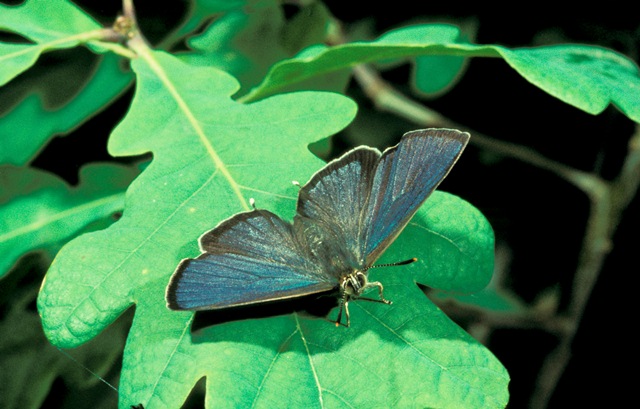 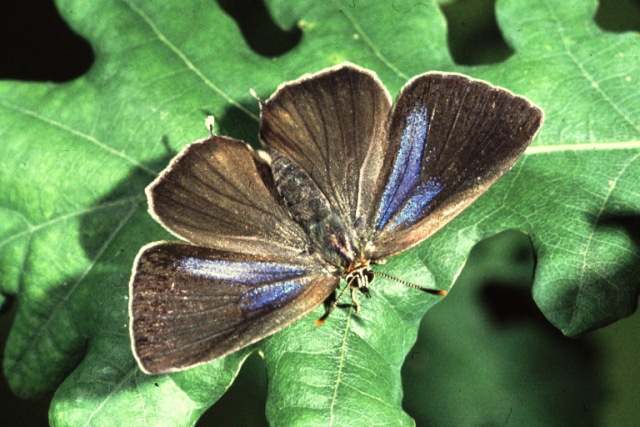 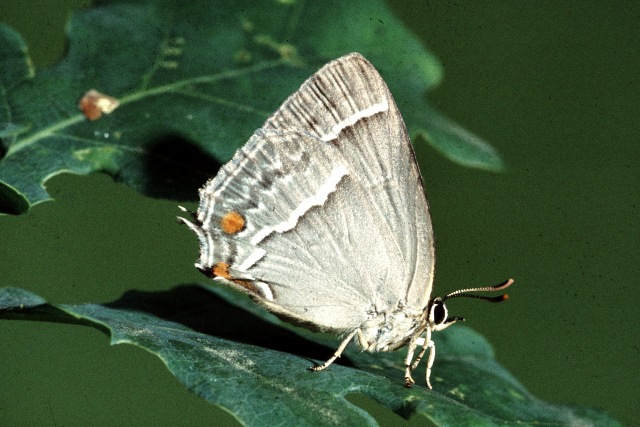
Photographs: Frits Bink ©.
Small, male wing length 16 (15-17) mm, female 15 (14-16) mm. Throughout the Benelux in oak woods, dunes, heathland with some oak trees, parks and tree rows along alleys; however, difficult to observe because the adult butterflies like to stay in the canopy.
It is on the wing from early-July until end-August. The required heat sum is 650°d and the maximum tolerated 2900°d. The species is known from maritime and continental climates, amplitude 5 to 16, and corresponding climate windows are 23 weeks up to the whole year.
The easiest way to observe the adult butterflies is from a view point higher than the canopies of the oak trees, where numbers of them bask. In periods of dry weather they may be forced to come down and look for drinking places, in a garden this may be the bank of a pond.
Ecological characteristics
Behaviour over time
Overwintering: egg on twig of bush or tree close to a terminal bud.
Reproduction: oviposition starts after two weeks when the body contains 20 (16-32) eggs. Potential production 3.6 times more. Oviposition occurs from end-July until end-August. There are 10-15 eggs in the body continuously and a daily oviposition of the same number may be possible, see table 38.
Larval feeding periods: 4-6 weeks from mid-April until mid-June.
Generations: always one.
Spreading of risk: the long lifespan and the nomadic behaviour of the female, sometimes even migrating over long distances, are important for survival.
Life cycle: egg 34-40 weeks; larvae 56 (30-68) days; pupa 20 (18-22) days.
Life span of adult: very long, 5 to 6 weeks.
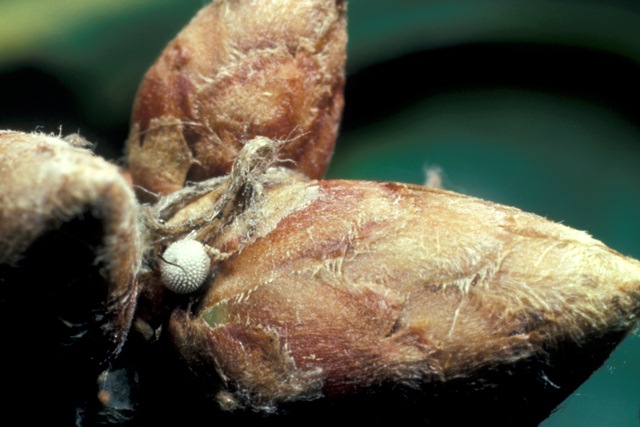 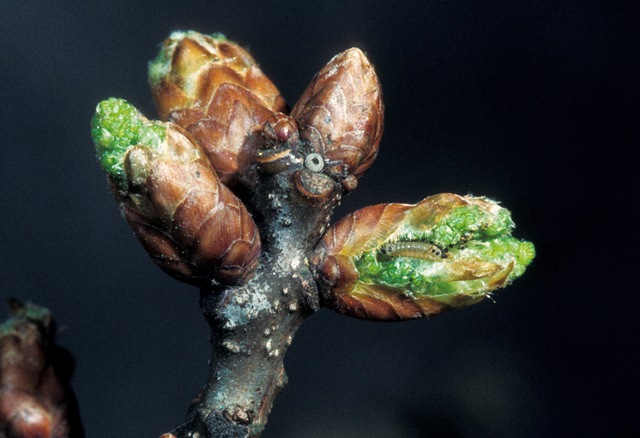 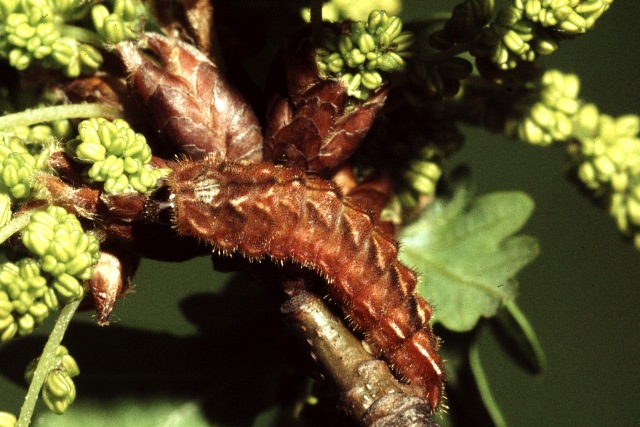
Photographs: Sepp Weidemann, Frits Bink, Frits Bink ©.
Behaviour in space
From stay-at-home to migrant: stay-at-home, spatial requirement modest.
Finding a mate: males gather in a prominent tree crown, females look for males.
Orientation in the landscape: on wood and bushes of oak, also on big trees along avenues.
Oviposition: on terminal buds of twigs in the outer part of a crown.
Defence
Threats from other organisms: larvae are very well camouflaged, except when they are nearly full grown and feed on the mature leaves.
Myrmecophily: the larvae are not attended by ants, the pupae stridulate and hide sometimes in ants nests several meters from the tree trunk from which the larva had descended (Thomas & Lewington 1991: 62).
Threats from the environment: little risk, larvae are well sheltered in the oak shoots and the adult in the tree canopy.
Feeding habits
Adult: honeydew and nectar of small flowers such as the alder buckthorn.
Larva: hatch before bud burst and wait for the bursting, later on it stays in the mass of male catkins, where it eats the stamen and pistils, for as long as possible and only during the last few days before pupating does it feed on mature leaves.
Larval foodplants
Plant species: Fagaceae: Quercus cerris, Q. petraea, Q. robur, Q. rubra.
Journal
Rearing experiment based on specimens from the Grebbenberg, Rhenen, Netherlands:
December 1983: three eggs collected.
Overwintered outdoors.
19 April 1984: first egg hatched, oak shrub showed first sign of bud burst.
23 April: all three eggs hatched.
28 April: oldest larva left the bud and searched for new one.
3 May: larva moulting.
8 May: biggest larva nearly full grown, still ate flower buds, which were consumed until empty.
11 May: prepared for pupating.
16 May: pupated.
5 June: adult appeared, male.
Table 38-1. Results of dissections of wild collected purple hairstreak butterflies.
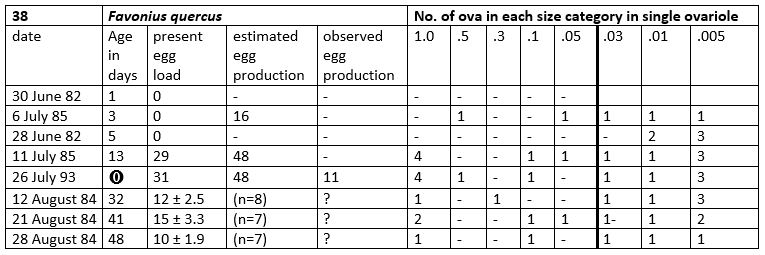
Table 38-2. Collection and observation localities
F, Lorraine, Damvillier 49° 21’ 27”N – 5° 24’ 21”E; 12 June 1984.
F, Vallouise 1200 m, 44° 51’ 18”N – 6° 29’ 28”E; 5 September 1982.
NL, Bakkum, 52° 33’ 13”N – 4° 37’ 58”E; 4 June 1985 (larvae).
NL, Haaksbergen, Harrevelderschans 52° 08’ 59”N – 6° 46’ 45”E; 5 July 2003.
NL, Leersum 52° 02’ 12”N – 5° 25’ 49”E; 14 August 1982.
NL, Maashorst 51° 43’ 33”N – 5° 35’ 33”E; 17 July 1985.
NL, Veenendaal 52° 01’ 20”N – 5° 30’ 48”E; 12 August 1984, 21 August 1984, 28 August 1984.
Fig. 38-1. Favonius quercus, phenogram adapted from Bos et al. 2006: 154.
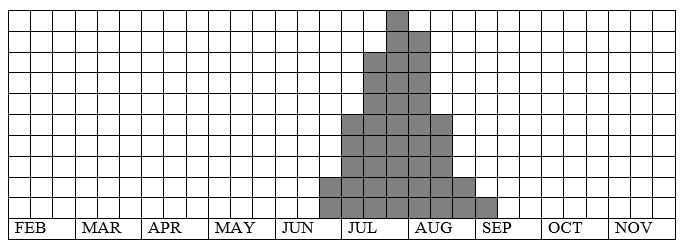
Fig. 38-2. Favonius quercus, habitat characteristics.
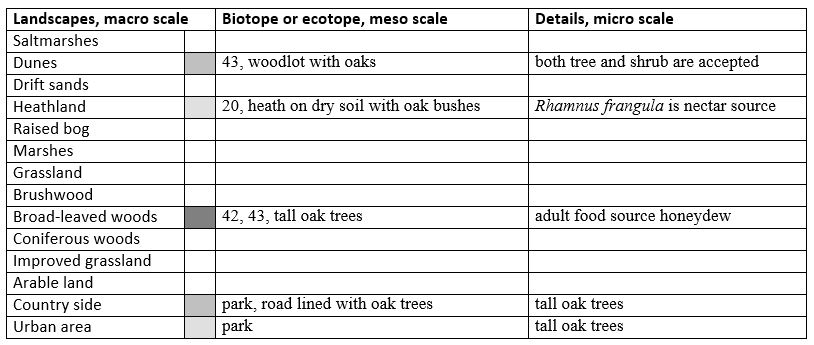
Fig. 38-3. Favonius quercus, climate matrix, heat-sums 650 - 2900°d.
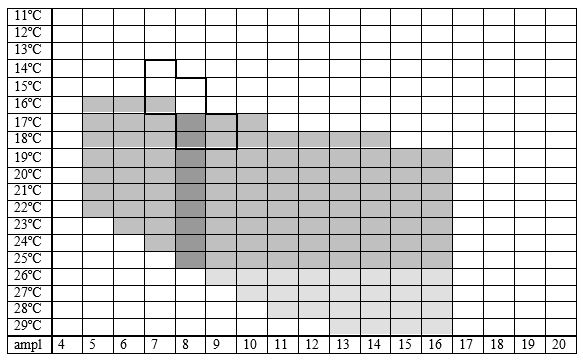
|











